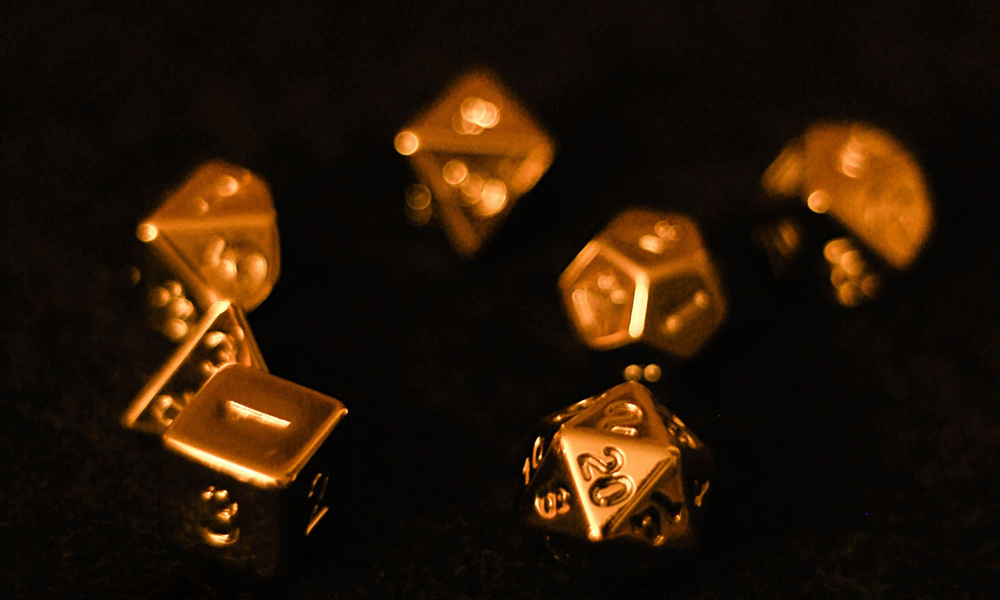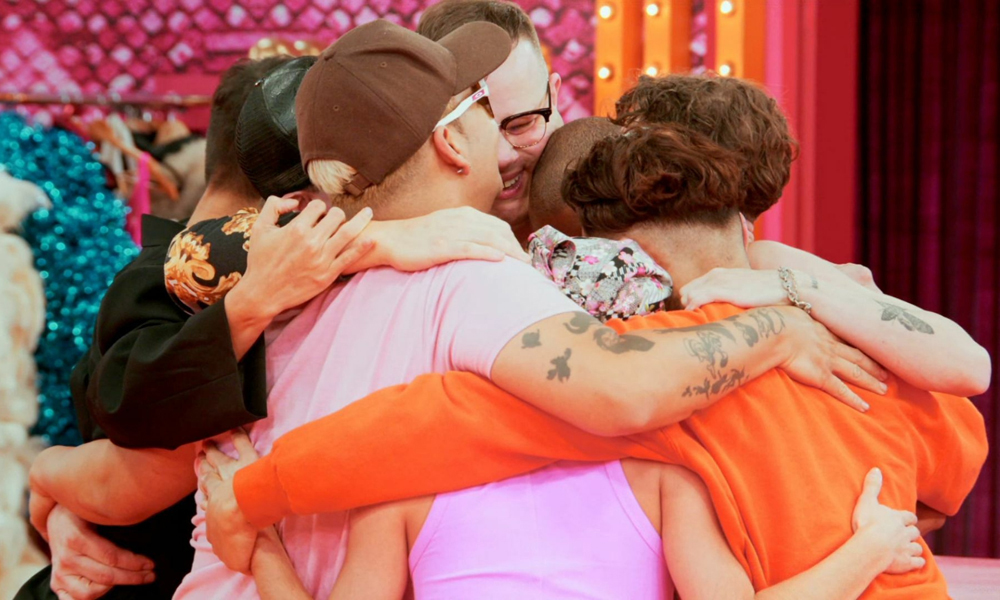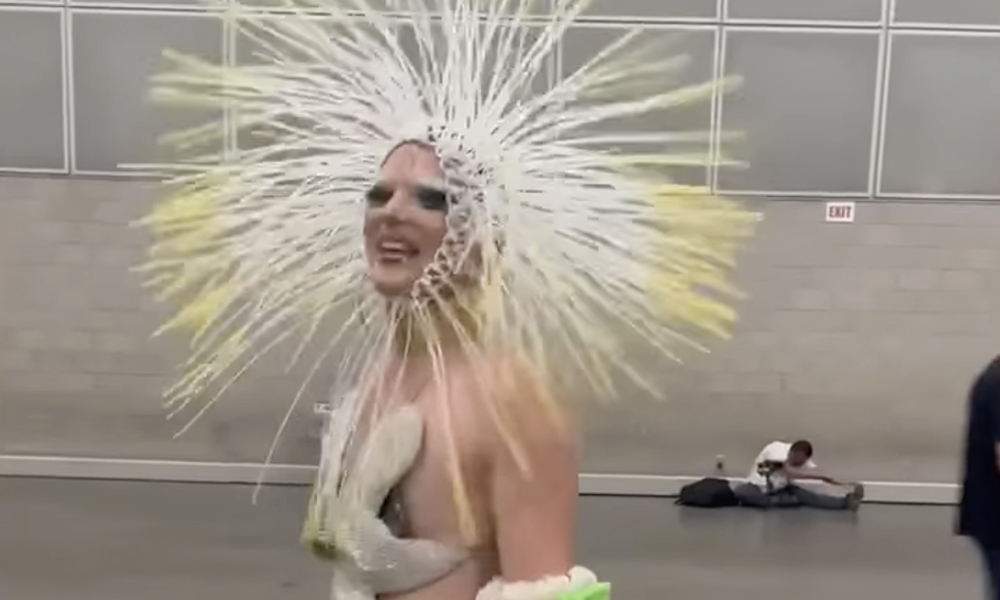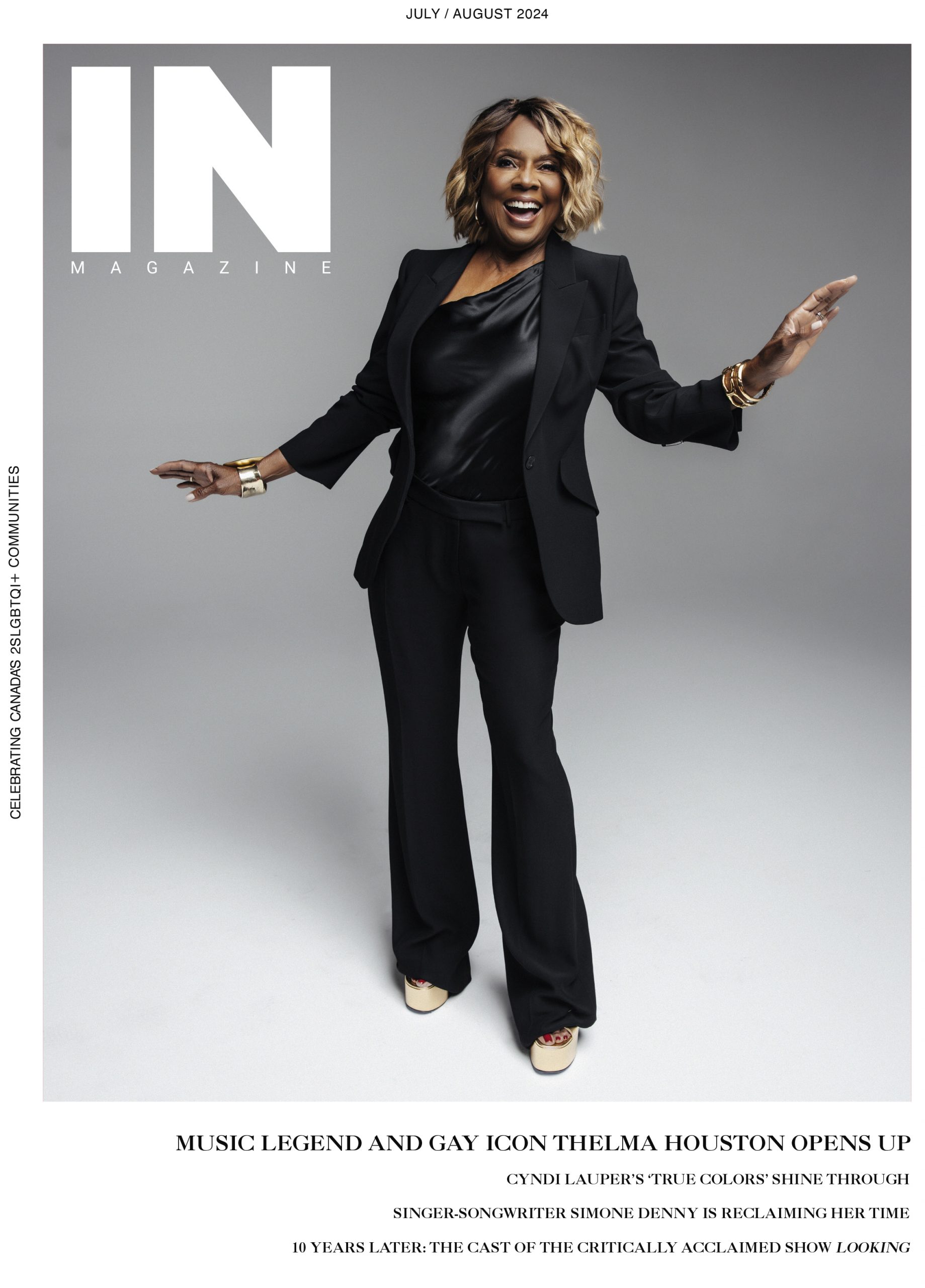A queer exploration through role-playing games…
By Rowan O’Brien
Although the pandemic kept us physically apart from our loved ones, I was lucky enough to reconnect with old friends during my newfound free time. Inspired by Dimension 20, an actual-play Dungeons & Dragons show that I binged to fill the endless empty days in early 2020, I sent an inciting message to my Dungeon Master (DM) from elementary school: “We should do a Zoom D&D sesh!”
If you spent any time on TikTok over the past three years, you may have noticed that I am not the only one who reinvested in my nerdy interests. In fact, there was a Dungeons & Dragons renaissance as people searched for a weekly activity that didn’t require them to leave their homes. According to a CNBC article, Dungeons & Dragons sales jumped 33 per cent in 2020 and the revenue for the creators, Wizards of the Coast, rose 24 per cent.
As the pandemic forced us to spend more time alone with our thoughts than we normally would (or would like to), another phenomenon started popping up on social media. A lot of people were realizing they were queer and trans, and others were coming out again, for a second or third time. Bumble actually conducted a survey and found that at least 14 per cent of their users’ sexual preferences have shifted since 2020.
Based on this data, it looks like the pandemic led to a spike in two of my favourite things: Dungeons & Dragons, and being gay. In fact, these two passions of mine often go hand in hand, as queer people have flocked to Dungeons & Dragons like wyverns to a flame. Playing a tabletop role-playing game (TTRPG) is a great way to explore gender and sexuality, whether intentionally or by happy accident, as it was with me.
When my friend group started our D&D journey as a bunch of middle school goofs, we predictably turned into a party of “murder hobos” – a term for a group that robs and murders their way through the game. One of the things that my character loved to steal was hearts, and she collected as many husbands as possible. As time went on, however, I became more comfortable wooing the women NPCs (non-player characters) that our party ran into – honestly, my D&D characters are still better at flirting with hot ladies than I am! I soon had as many wives as husbands in my half-elven polygamous marriage.
At the same time, I was repressing a hardcore crush on a close friend. Through my D&D character, I was able to act on the feelings I was having…albeit in a very campy and overexaggerated way. I can tell you first-hand that playing TTRPGs is a great outlet for emotions that you have buried, and your character may eventually become your stepping stone to realization and further exploration.
Kris, a fellow player, had a similar experience to mine, saying, “It was a running joke in my party for years that in every campaign, I’d manage to seduce and/or marry the most powerful woman in the game. It took me a while to realize that wasn’t a coincidence.”
Using role-playing as a therapeutic tool allows you to explore situations and emotions without putting yourself in a physically compromising situation, as well as having the extra safety feature of being able to stop the scene whenever you want. It stands to reason that whether D&D players mean to or not, they are able to confront difficult emotions through their own dramatic allegories in the game. There is even a community-wide joke that DMs are unpaid therapists for their players.
Recently, one of my friends, Lev, realized that the gender identity and pronouns of their character weren’t feeling right to them. While considering how to alter the storytelling to reflect this, Lev came to realize that the gender feelings their character was having were actually a reflection of their own. “I didn’t really make the connection at the time but in retrospect, that was very much when I had started thinking about my own gender identity again…and I was imagining it playing out in the game like I wanted it to go for myself.”
Not only can role-playing guide you towards self-awareness, but a lot of people take a more intentional approach towards their character build, incorporating an aspect that they would like to explore, such as pronouns or same-gender romance, as a way to simulate these experiences. With this tactic, you can also use your character as a human (or elf or orc) shield from any suspicious fellow players who wonder how much of yourself you’re pouring into your character. “My character is the one who wants to tongue the hot barbarian, not me.”
One example of someone who consciously set out to explore through D&D is Arden, who says, “For me, tabletop RPGs gave me a place to take parts of myself from deep inside and pull them out and accentuate them. One thing I found really helpful was just having a character with a name I wanted to try. It helped me so much with finding something I liked to be called. I struggled with that for years but after a couple [of] characters, I found one that fit.”
Dungeons & Dragons is the perfect platform to try out things that may seem scary in real life because many, if not most, D&D campaigns take place in high-fantasy settings. The beautiful and intense world you find yourself in can make the queer elements of your story a lot less conspicuous by comparison. Who cares that the half-elf princess is crushing on her handmaid when an ogre assassin is hunting you down?
Another reason that queer people congregate around D&D is that a core element of the game is the adventurers becoming a “found family,” a trope well known and loved among our community. Like a self-fulfilling prophecy, the folks that make up your D&D party often become as close-knit in real life (if you weren’t already besties to begin with). Because the D&D table becomes such a safe – almost holy – place, you can check your anxieties at the door and push the boundaries of your introspection with the support of your party.
My first D&D party was the lovechild of my elementary school friend group. By Grade 7, we had already scattered across Ottawa to different middle schools and, once in high school, we had become a sort of extended family, loving each other from afar and congregating once or twice annually around holidays. At the same time, queerness wove its way through our group, starting as a slow trickle that broke into a current pulling us all along as we each came into our identities over the years. More than a decade later, a group of weird gender-non-conforming kids had grown into a queer found family, once again playing weekly Dungeons & Dragons.
The connection between queerness and Dungeons & Dragons also permeates D&D media, such as Dimensions 20, the actual-play show I mentioned earlier. If you are ever struggling to find queer or trans representation, take a dive into D&D media, where the characters don’t have to be vetted by producers but come to life the second the DM speaks them into existence. One of the reasons that I love Dimension 20 is because their queer rep is unlike anything I’ve seen in mainstream media, and I can see myself reflected not only in the players but in the ever-growing roster of magical queer characters.
One of the core D&D rulebooks, The Player’s Handbook, even decrees: “You don’t need to be confined to binary notions of sex and gender.” In Mordenkainen’s Tomb of Foes, another official sourcebook, they canonically reveal that “[O]ccasionally elves are born who are so androgynous that they are claimed to be among the blessed of Corellon – living symbols of the god’s love and of the primal elves’ original fluid state of being. Many of Corellon’s chief priests bear this blessing.” This tome also introduced the mechanism called The Blessed of Corellon by which an elven character can change their sex after a long rest. Incorporating these elements into the rules as written solidifies the presence of queerness in the game and the wider D&D community.
This creative freedom was recently threatened when the Wizards of the Coast announced that they would be releasing a new, more restrictive Open Gaming License. The changes they proposed would threaten the livelihood of smaller D&D creators and limit the supposedly limitless gameplay. Thankfully, on January 27, it was announced that WotC had actually listened to their fans and decided to not only reinstate the current OGL but put the Systems Reference Document under the Creative Commons. So now is the time to make D&D as queer as you possibly can! And, yes, that is a challenge.
If you are interested in trying out D&D for yourself but don’t know where to start, Toronto Gaymers host a lot of gaming events, including D&D campaigns that they organize at the Hairy Tarantula (https://hairyt.com). Alternatively, many people post looking for queer-centric adventuring parties through local queer virtual communities, such as Facebook or the Lex app. There is even a specific group on Facebook called Toronto Gaymers: D&D Adventures! where you can find a lot of like-minded folks. Or you can just bribe your best friends with their favourite snacks to start a magically queer adventure with you.
ROWAN O’BRIEN is a queer writer and filmmaker based in Toronto who loves ranting about LGBTQ+ representation in media while creating their own queer stories. Their queer coming-of-age short film Crushed played at the Toronto Youth Shorts festival, and their next short film, City Limits, will be released this year.







POST A COMMENT